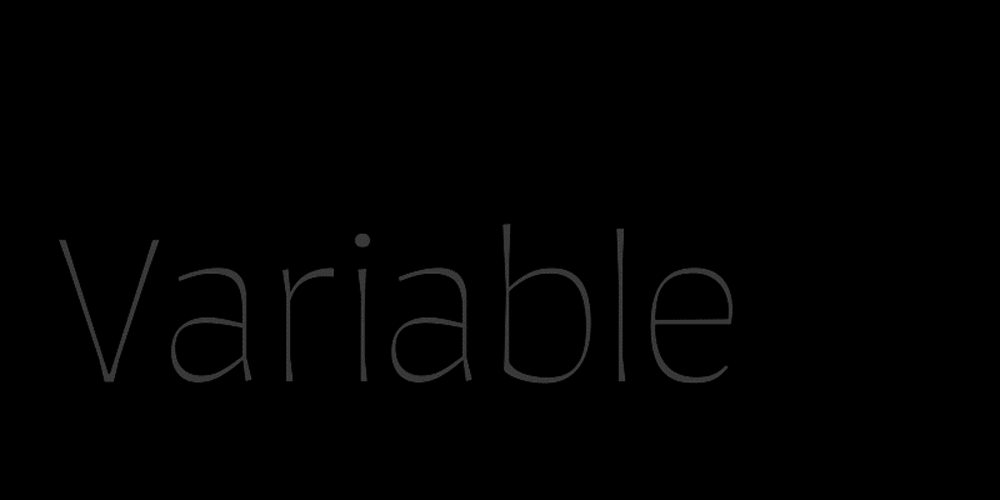What Are Variable Fonts?
Variable fonts are a single font file that contains multiple variations of a typeface, such as weight, width, slant, optical size, and more. Unlike traditional fonts with discrete weights (like light, regular, bold), variable fonts provide a continuous range of styles, offering greater design flexibility.
These fonts can replace multiple static font files, reducing the file size and improving the performance of web pages and applications by minimizing the number of font files and HTTP requests required to load a page.
Key Benefits of Variable Fonts
Design Flexibility
Variable fonts give designers precise control over typography, allowing for smoother transitions between font styles and detailed adjustments across multiple axes (e.g., weight, width, slant). This enables more creative freedom and adaptability in design.
Improved Performance
Since a single variable font file can encompass multiple styles, it reduces the number of HTTP requests needed to load web pages, which enhances site performance and reduces load times—crucial for user experience and SEO rankings.
Accessibility in Typography
Variable fonts offer finer adjustments to font attributes like weight, width, and optical size, making typography more accessible for users with varying visual needs and enhancing readability across devices.
Responsive Web Design
Variable fonts are ideal for responsive design, seamlessly adjusting across different screen sizes and resolutions. This ensures consistent typography and improves the user experience on both desktop and mobile devices.
Applications of Variable Fonts
Web Design
Variable fonts are gaining popularity in web design due to their ability to streamline performance and offer greater design flexibility without increasing load times. Their use is particularly beneficial for websites aiming for a clean, modern look.
Graphic Design
In graphic design and desktop publishing, variable fonts provide designers with enhanced creative freedom, allowing them to experiment with different styles and weights without needing to rely on multiple font files.
User Interface (UI) Design
Variable fonts play a significant role in user interface (UI) design by providing various typographic options without significantly increasing file sizes. This makes them ideal for mobile and web applications.
Branding
Many brands now use variable fonts to create custom typographic systems that can adapt to various formats, from digital to print, while maintaining consistent brand identity.
More Characteristics of Variable Fonts
OpenType Format
Most variable fonts are distributed in the OpenType format (.otf or .ttf), which allows for multiple axes of variation within a single font file.
Axes of Variation

Variable font in use: Pressato.
Variable fonts can have several axes of variation, such as weight, width, slant, optical size, and others, providing designers with a precise way to control the appearance of text for different design needs.
CSS Integration
Variable fonts can be integrated into web projects via CSS, providing full control over the font's various axes of variation directly in your site's stylesheet.
Resistenza's Variable Fonts Collection
Challenges of Variable Fonts
Browser Support
While most modern browsers support variable fonts, some older browser versions may not fully support them. In these cases, fallback fonts may be required to ensure consistent typography across all devices.
Compatibility with Design Tools
Variable fonts may not be fully compatible with all design tools or platforms, especially older versions. To take full advantage of variable font features, ensure your design software is updated to support the latest OpenType font technologies.
Conclusion: Overall, variable fonts represent an exciting advancement in typography. They provide designers and developers with unprecedented flexibility and efficiency, offering a streamlined workflow and improved web performance. As support for variable fonts continues to grow across browsers and design tools, their adoption is expected to become even more widespread.
